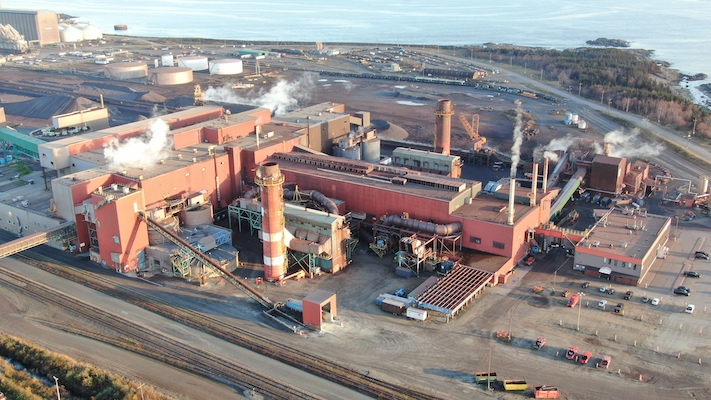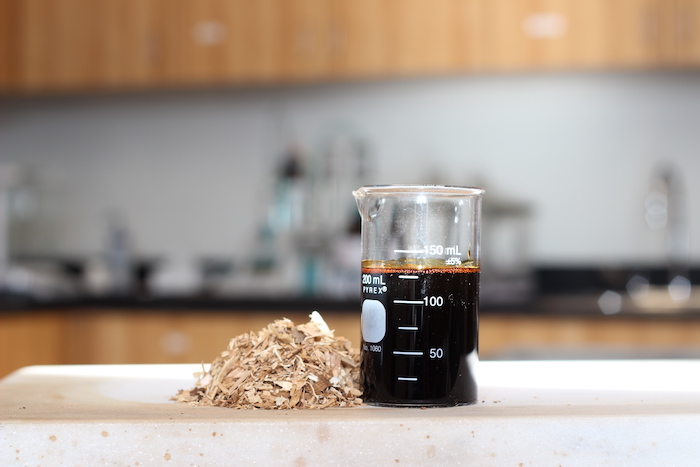
2023 #CCEAwards Showcase: Pellet Plant Biofuel
November 10, 2023
By CCE
“Lots of people talk about solutions like this, but they actually did it, at scale.” – Jury
Category: Natural Resources, Mining, Industry and Energy
Award of Excellence Winner: BBA
Mining company ArcelorMittal wanted to reduce the greenhouse gas (GHG) emissions generated by its iron oxide pellet production processes in Port-Cartier, Que., so it decided to incorporate pyrolysis oil—a local, carbon-neutral biofuel made from logging waste—to replace some of the fuel oil in its operations.
The project would be the first in the world to use pyrolysis oil in its processes on a regular basis and at such a scale. In fact, it would represent the largest consumption of any fuel made from forest biomass.
BBA was brought on-board to carry out a feasibility study. The firm based its analyses and recommendations on standards and requirements from the National Fire Code of Canada (NFC), Québec’s Regulation Respecting Occupational Health and Safety, Québec’s Clean Air Regulation (CAR), the Canadian Standards Association (CSA), the American Petroleum Institute (API) and the National Fire protection Association (NFPA).
Ensuring viability
BBA’s mandate was to ensure the quality and consistency of the iron oxide pellet firing process could maintain and even increase the plant’s output.
The firm performed the study to ensure the viability of converting the plant’s fuel oil systems to pyrolysis oil. The firm also ensured the pyrolysis oil facilities were safe and met industry standards, requirements and best practices for workers’ health and safety and for the environment, while ensuring iron pellet production and quality remained optimal.
The team also helped: review the physicochemical properties of pyrolysis oil and its components; identify the points of emission of flammable (explosive) or odorous vapours; develop a summary of the exposure, explosivity and emission threshold standards, to comply with applicable regulatory requirements in Québec; analyze the facilities to help make recommendations; and issue recommendations for potential system expansion.
The technology is helping decarbonize the heavy-industry sector while using a local resource. It is also a solution that can be transferred to other types of furnaces and kilns; indeed, it is already attracting interest from other industrial players.
A different kind of fuel
Pyrolysis oil does not behave like standard hydrocarbons, so it was important for the experts from BBA’s advanced fuels and chemicals team to understand the nature of this biofuel. Through the process, they gained valuable knowledge that would bring the project to fruition.
After interpreting the product’s physical properties, they adapted systems to bring the pellets to their ideal burning point, which would help prevent equipment from clogging through polymerization. Given the mechanical properties, they also modified the piping design to maximize fluid pumping. Finally, they selected a metallurgy and instruments that were adapted to the oil’s corrosive nature.
The oil would come from BioEnergie AE’s restarted plant. To get this facility up and running, ArcelorMittal committed to consuming its minimum biofuel production during the feasibility study.
This meant converting an additional area of the pellet furnace to pyrolysis oil, with a system used in 2015 pilot tests. Reusing this system allowed BBA’s design team, in conjunction with ArcelorMittal’s operations and maintenance (O&M) teams, to observe some of the issues and opportunities for improvement when designing permanent facilities.
BBA worked with ArcelorMittal to develop the commitment plan to ensure the various affected stakeholders accepted the project. The plan made it possible to gain the trust and support of the O&M staff, health and safety officers, environmental officers and management, by taking their concerns into account. The collaboration was particularly valuable and helped improve the design along the way.
By successfully integrating all considerations, ArcelorMittal could make tangible progress toward its GHG emission reduction targets while promoting synergies with other local industries in Port-Cartier.
Adapting to the region
By using pyrolysis oil, ArcelorMittal is providing an outlet for local forestry professionals, who have had limited options for managing their wood waste since the Baie-Comeau paper mill shut down in 2020. It will also benefit the Arbec sawmill in Port-Cartier, which will be able to increase production capacity and no longer have to suspend operations because of waste storage management problems. ArcelorMittal and BioEnergie AE’s production line now allows the forestry company to operate seven days a week.
This decarbonization project is perfectly adapted to its region and surroundings. From an environmental point of view, it not only reduces GHG emissions and the risks associated with fuel transportation, but it also simplifies operations for ArcelorMittal.
The project marks the beginning of the mining company’s energy transition in Port-Cartier, as a crucial step in converting its plant into a greener facility.
The success of the feasibility study has opened the door to a detailed engineering project for the construction of a complex-wide pyrolysis oil system. Ultimately, the plant will use more than 32 million L of pyrolysis oil per year, representing the entire output of the BioEnergie AE plant.
This will allow ArcelorMittal to cut its annual use of heavy fuel oil and coal by 23% and reduce its CO2 emissions by 57,600 t. And despite the fuel switch, almost all of the site’s infrastructure can be reused and no modifications were made to the furnaces, thus extending the life of existing equipment.
Progress to date
BBA completed its project on time and on budget, providing a multidisciplinary analysis to ArcelorMittal with an overview of the state of the client’s facilities, having verified more than 50 items in relation to industrial safety, air quality, control systems and pellet furnace instrumentation. Subsequently, the feasibility study determined the final design of the permanent system and evaluated how much it would cost to implement it in the pellet plant.
Since June 2022, two out of nine areas of the plant—with a total of five burners—have been operating with pyrolysis oil, using more than 10 million L. Following the successful feasibility study, ArcelorMittal decided to accelerate work in other areas to further expand its use of pyrolysis oil. With the detailed engineering project underway, the bidding process began in April 2023.
ArcelorMittal hopes to cut 30% of its GHG emissions by 2030 and become carbon-neutral by 2050. This project is a step in that direction, while maintaining operational and financial performance.
Pellet Plant Biofuel, Port-Cartier, Que.
Award-winning firm (prime consultant): BBA, Mont-Saint-Hilaire, Que. (Stéphane Charest, P.Eng.; Émile Claveau, P.Eng.; Jérôme Pilon, P.Eng; Olivier Bertrand, P.Eng.; Zied Oueslati, CEP; Frédéric Lacroix-Tremblay, CEP; Guillaume Picard, P.Eng.; Jim McCann, P.Eng., M.Eng.; Vincent Brunelle, P. Eng.; Caroline Le Page, biologist).
Owner: ArcelorMittal.
Other key players: Ensyn, BioEnergie AE.

